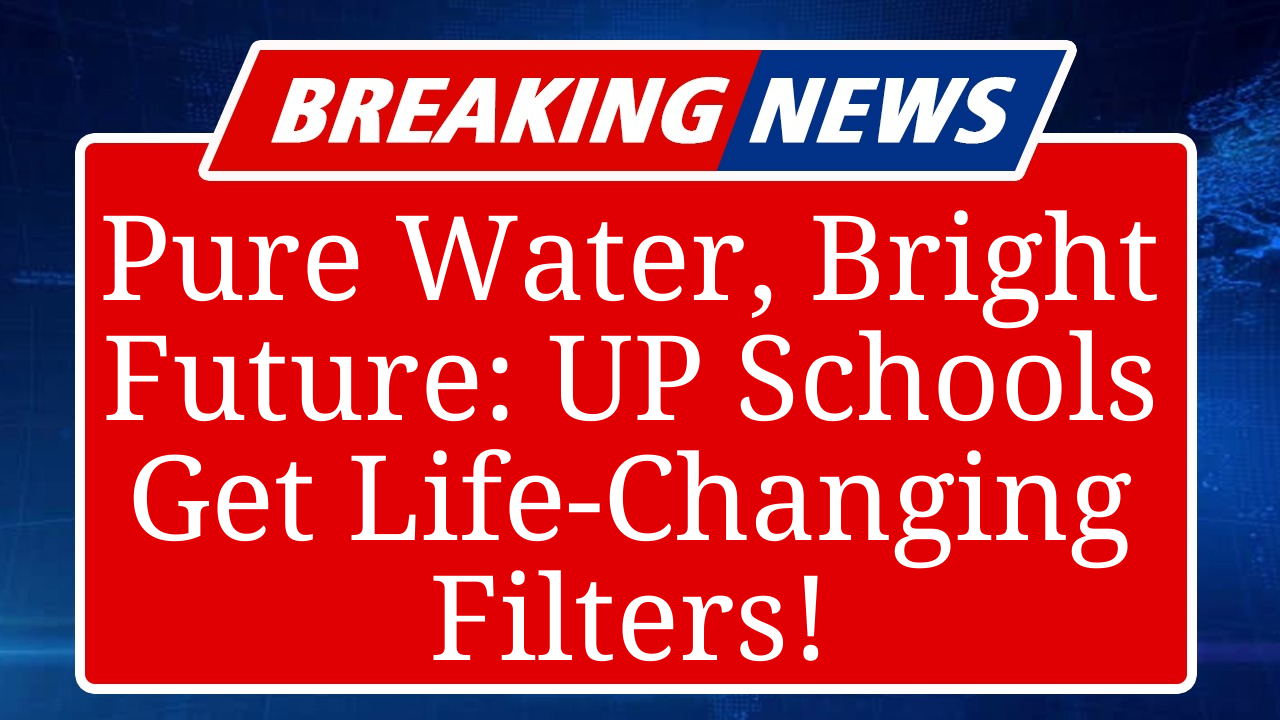“Uttar Pradesh is revolutionizing school hygiene with new water purification systems, addressing contamination issues. Over 10,000 schools now have access to safe drinking water, reducing waterborne diseases and improving student attendance. The initiative, backed by government and private partnerships, aligns with national clean water goals.”
Uttar Pradesh Rolls Out Water Purification Systems in Schools
In a significant push to enhance public health and education, Uttar Pradesh has launched an ambitious initiative to install advanced water filtration systems across more than 10,000 schools. The program, spearheaded by the state government in collaboration with NGOs and private sector partners, aims to provide clean and safe drinking water to millions of students, tackling the persistent issue of waterborne diseases that have long plagued the region.
The initiative comes at a critical time, as recent data from the Ministry of Jal Shakti indicates that over 40% of rural schools in India still lack access to potable water. In Uttar Pradesh, where groundwater contamination from fluoride, arsenic, and bacterial pathogens is rampant, this move is seen as a game-changer. According to a 2025 report by the National Institute of Public Health, waterborne illnesses account for nearly 20% of school absenteeism in the state, disproportionately affecting rural areas.
The new filtration systems, primarily based on reverse osmosis (RO) and ultraviolet (UV) technologies, are designed to remove up to 99% of contaminants, including bacteria, viruses, and heavy metals. Unlike traditional filters, these units require minimal maintenance and can operate without electricity, making them suitable for remote schools with unreliable power supply. The state has partnered with organizations like WaterAid India and private firms such as KENT RO Systems to deploy these systems, with an estimated investment of ₹500 crore.
As of August 2025, over 10,000 schools, including 7,500 in rural districts like Varanasi, Lucknow, and Kanpur, have been equipped with these purifiers. The initiative is part of the broader Jal Jeevan Mission, which aims to ensure safe drinking water for all rural households and institutions by 2026. Officials report that the filters can process up to 250 liters of water daily, sufficient for schools with enrollments of up to 500 students.
The impact is already visible. In a survey conducted by WaterAid India in 50 schools across Uttar Pradesh, 85% of headmasters reported a decline in student illnesses linked to contaminated water. Attendance, particularly among girls, has improved by 12% in schools with newly installed filters. This is significant, as poor sanitation and water quality often deter female students, especially during menstruation, leading to higher dropout rates.
The state government has also integrated community engagement into the program. Students and teachers are being trained to maintain the filtration systems, fostering a sense of ownership. Workshops on water conservation and hygiene practices are being conducted, with over 15,000 students participating in “Jal Chaupals” to promote awareness. These efforts align with the Swachh Bharat Mission’s focus on sustainable sanitation and hygiene in schools.
Private sector involvement has been pivotal. Companies like Tata and Havells have supplied low-cost, high-efficiency purifiers tailored for rural settings. Additionally, the government’s Common Service Centres (CSCs) have collaborated with Village Level Entrepreneurs (VLEs) to establish maintenance hubs, ensuring long-term sustainability. However, challenges remain. Rural schools with high total dissolved solids (TDS) levels above 500 ppm require specialized filters, and affordability remains a concern for smaller institutions.
The initiative has drawn praise from educationists and health experts. Dr. Anjali Sharma, a public health specialist, noted, “Access to clean water in schools not only reduces disease but also enhances cognitive development and academic performance.” The program is expected to expand to an additional 5,000 schools by mid-2026, with plans to incorporate solar-powered purification systems in areas with chronic electricity shortages.
Disclaimer: This article is based on recent reports, government data, and information from organizations like WaterAid India and the Ministry of Jal Shakti. The figures and outcomes mentioned are sourced from credible publications and may be subject to change as new data emerges.

